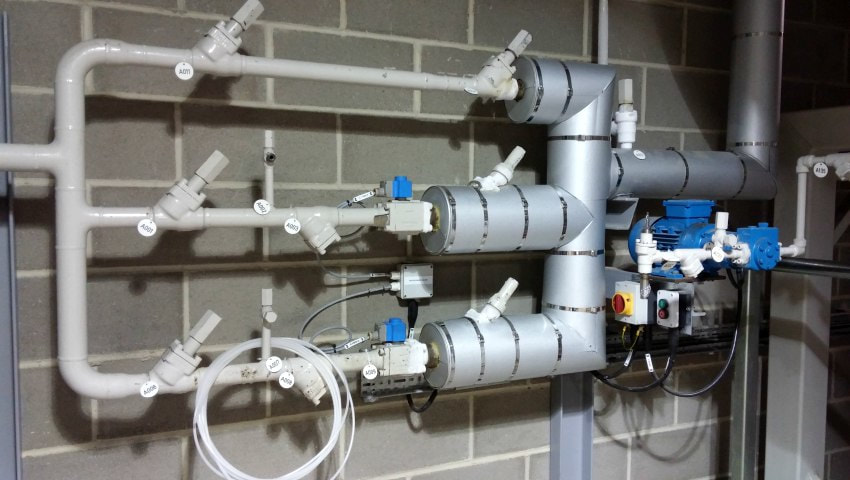05 July 2018
|
| Graham McDermott, J & E Hall Director of Process Systems and Marine, says the choice of low GWP (Global Warming Potential) alternatives for large refrigeration systems needs to widen. There has been a wealth of advice in refrigeration on the need to make the switch to low GWP refrigerants to meet the F-Gas phasedowns. With refrigeration playing such a key role in the food processing industry, some producers and suppliers have taken the message on board but some have been left with big decisions to make. |
| It’s not easy to be sure you are making the right refrigerant choice for your system. This year’s 37% cut in the quota for the production of virgin refrigerants is having a major effect on supplies. So far most of the research into alternatives with a low GWP has centred on gases more suited to smaller refrigeration systems. This has focused on blended refrigerants – those with glidepoints, used with direct expansion evaporators. They work well if you are maintaining or fitting systems in convenience stores, restaurants and installations of a similar scale. But if you are working with large, low temperature systems like those found in food processing, there are no easy answers. Flooded evaporators are more likely to be employed in larger systems where in the past single component gases like the now-banned R12 and R22 were used. They were relatively easy to install and maintain. R134A for high temperature applications, and R507 for medium and low temperature jobs, offered a way forward but their high GWP means that these HFC blends have a short shelf life. In this respect the new blended low GWP refrigerants offer no real alternative for medium and low temperature applications because they can be difficult to manage. There is the risk of the refrigerant distilling and its components splitting into their original form. But there has been little or no research to produce blended gases which can rise above this for systems where flooded evaporators are in use. Zeotropic refrigerants with a mixture of different boiling points may provide a solution in the long term but at present there are no low GWP HFC alternatives for low temperature applications in the industrial sector where flooded evaporators are in use. Hydrocarbons like propane and propylene have in some circumstances provided cooling solutions, however they are more expensive to install, with flameproof equipment needed, and you have the added responsibilities of the ATEX regulations to consider. Natural refrigerant The new class of low GWP HFO refrigerants like R1234ZE and R1234YF are still in the early stages of development. More work is needed here if they are to be considered. This brings me to ammonia – a good choice for large systems operating on an industrial scale. It is a versatile, effective and efficient natural refrigerant which does not deplete the ozone layer and has excellent thermodynamic qualities, providing a wide temperature range. This natural refrigerant has a fine safety record and is used in many applications in the meat, poultry and dairy industries. Improvements in technologies involving heat exchangers, compressor controls and low-pressure receivers have allowed the charge size to be reduced and this lowers the risk of leaks. Ammonia – even in small quantities – has a recognisable odour which can be viewed as its greatest single safety asset. Much more discussion is needed on how we are going to meet the refrigerant challenge facing big systems but ammonia is an alternative that is already with us and one with a proven track record. We need to educate system designers, installers and end-users about the benefits of this green alternative. It could make everyone’s life a lot easier in the long run. |
Content continues after advertisements










